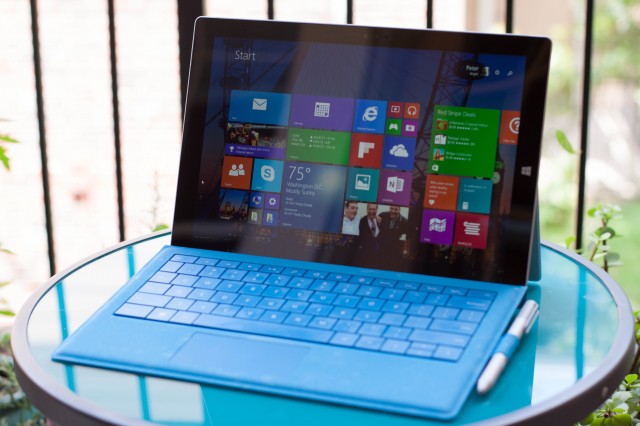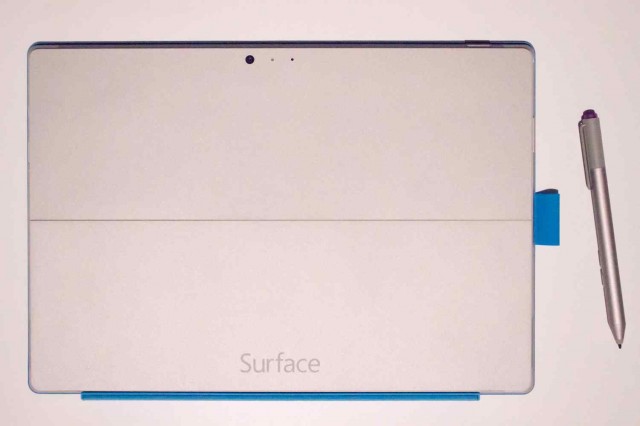Since the first iteration of the Surface range, the Surface RT, was released back in 2012, the biggest challenge has been categorization. The devices themselves have the form factor of a tablet, certainly. But since their onset, they've been paired with a range of keyboard covers that, combined with the integrated kickstand, make them in some ways comparable to laptops. And this comparison was invited. Steven Sinofsky, former president of the Windows Division, said at the Surface RT's launch event: "It's not a laptop, but it's the best laptop I've ever used."
However, these comparisons have been problematic. The ARM Surface RT and Surface 2 provide the Windows desktop, but the only software that can use it are the things built into Windows, such as Explorer and the preinstalled version of Office. Every other program those tablets run must come from the Windows Store and will be a touch-oriented Metro application.
| Specs at a glance: Microsoft Surface Pro 3 | |
|---|---|
| Screen | 2160×1440 12" (216 PPI), 10-point capacitive touchscreen |
| OS | Windows 8.1 Pro |
| CPU | Intel 4th generation Core i3, i5, or i7 |
| RAM | 4GB or 8GB (non-upgradeable) |
| GPU | Intel HD Graphics 4400 |
| SSD | 64GB, 128GB, 256GB, 512GB |
| Networking | 802.11ac/a/b/g/n with 2x2 MIMO antennas, Bluetooth 4.0 |
| Ports | Mini-DisplayPort, headphones, micro-SDXC, USB 3.0, Cover port |
| Size | 11.50×7.93×0.36" (292×201.3×9.1 mm) |
| Weight | 1.76 lb (0.800 kg) |
| Battery | 42 Wh |
| Warranty | 1 year |
| Starting price | $799 |
| Price as reviewed | $1,428.99 ($1,299 for 8GB RAM, 256GB SSD, i5 processor, $129 for Type Cover) |
| Sensors | Ambient light sensor, accelerometer, gyroscope, magnetometer |
| Other features | 36 W charger with 5 W USB charging port, TPM 2.0 |
The Intel Surface Pro and Surface Pro 2 have a fully functional desktop, and their processors are more than capable of running serious software such as Photoshop. But as tablets, they're hot and heavy (and, especially for the original Surface Pro, quite short on battery life). As laptops, their 10.6-inch screens are small, and the kickstands and keyboard accessories make them inadequate for actually using them on your lap.
For the cheaper ARM devices, these shortfalls are perhaps somewhat excusable. They do everything a tablet needs to do and more. The x86 devices, however, have fallen between two categories, excelling neither as tablets nor laptops, but costing every bit as much.
Their proponents argue that instead of being compared to tablets and laptops, the devices instead form a new category. Even that approach is problematic, though. There are other hybrid devices on the market, such as Lenovo's excellent and expensive ThinkPad Helix; those devices do at least as good a job of supporting tablet scenarios while managing to do a far better job of supporting laptop scenarios. If there is truly a space in the market between the tablet and the laptop, the Surface Pro range still comes off as second best.
As such, the Surface Pro and Surface Pro 2 made sense only for a narrow group of users: those who needed the support for desktop applications and operated only in environments where the poor on-lap usage didn't matter, but who also wanted or needed something that had good support for tablet-style applications and could not carry a standalone tablet in addition to a conventional laptop.
Change any of these constraints and the Surface Pro and Surface Pro 2 no longer make sense. If you don't need desktop software, stick with the Surface RT or Surface 2. If you need genuine on-lap utility, buy either a genuine laptop or one of the hybrids with clamshell keyboards. If you don't need tablet software, buy a MacBook Air (or other laptop of your choosing). If you can carry two devices, buy a MacBook Air and an iPad. And so on.
These issues were apparent with the original Surface Pro. Surface Pro 2 kept the fundamental concept the same, and while the Surface Pro 2 hardware was superior in every way, it did little to address the challenges imposed by the form factor.
Third time’s the charm?

It's often been said (though it probably isn't true) that Microsoft gets things right on the third try—version one sucks, version two is barely adequate, and version three is the one that finally makes a mainstream splash. Does the Surface Pro 3 have what it takes to define a market and hit the big time?
Unlike the Surface Pro 2, which essentially stuck a new processor in an old system, the Surface Pro 3 is all-new. Unlike the Surface Pro 2, the Surface Pro 3 is a reaction to and acknowledgement of at least some of the criticisms leveled at the Surface product range.
And unlike the Surface Pro 2, the Surface Pro 3 is squarely and unambiguously aimed at laptop users. Introducing the new system, Microsoft cited "proprietary Microsoft research" asserting that 96 percent of iPad users also carry laptops. Not necessarily the most credible source—we asked the company if it could provide any information on how it arrived at this figure, but none was forthcoming. Still, we feel it does capture an essential truth. The exact proportion may vary, but many tablet users are also laptop users.
The company also recognized certain shortfalls in using the Surface Pro 2 as a laptop, and in particular as a laptop on your lap. Two pain points in particular were acknowledged: the 10.6-inch screen is uncomfortably small for prolonged usage of the Windows desktop, and the Surface Pro 2/Type Cover combination isn't especially stable when used on your lap.

There are many ways that a company could react to this information. It could decide that the two categories are sufficiently different that their continued coexistence should be supported and that the best way to approach the market would be a pair of related but different products: a best of breed tablet, and a best of breed laptop. And throughout the Surface Pro 3 presentation, the benchmark used for comparisons was a laptop: namely, the MacBook Air.
But Microsoft has not built a laptop.
Microsoft's target, such as it is, are all those people carrying around both a laptop and a tablet. Microsoft thinks that's suboptimal. One device can do it all, and that device is the Surface Pro 3.
The Surface Pro 3 is still a tablet. It's a bigger tablet, it's a thinner tablet, it's a lighter tablet, but it remains a tablet. In just about every way, though, it's a different tablet from the Surface Pro 2.
reader comments
330